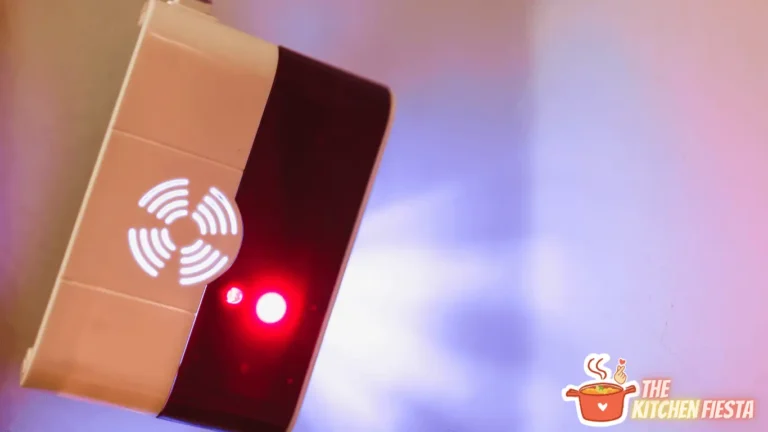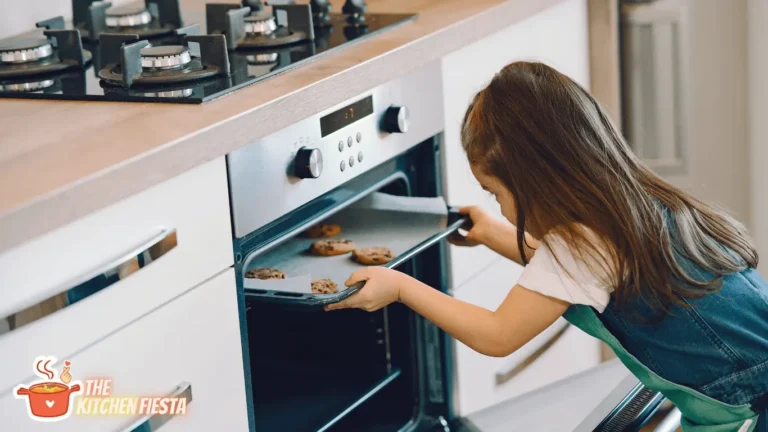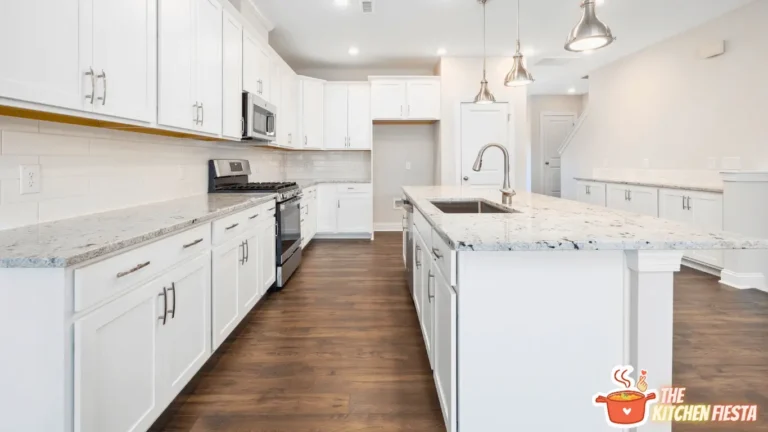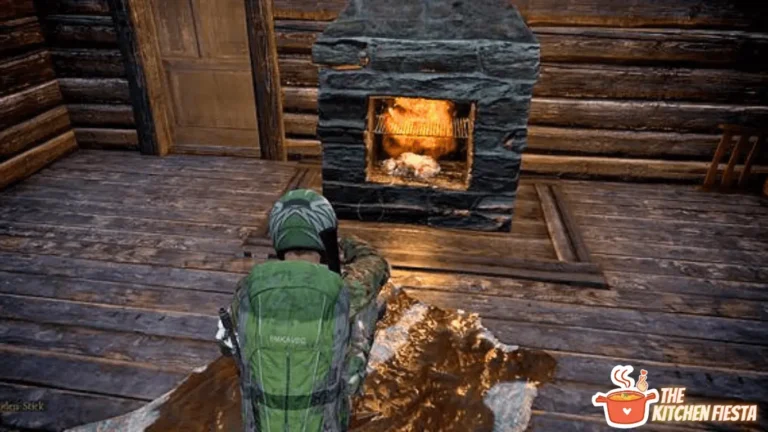Can You Paint Gas Stove Grates? A Step-by-Step Guide for DIY Refinishing
Is your gas stove looking a bit dated and worn? Those black grates can really show grease stains, scratches, and discoloration over time. If your stove has seen better days, you may be wondering if it’s possible to give it a facelift without fully replacing it.
Can you paint gas stove grates to make them look new again? The short answer is yes, you can paint your gas stove grates! With the right high-heat spray paint and some elbow grease, you can give your old grates a brand new look.
In this step-by-step guide, we’ll cover everything you need to know to refinish your stove grates yourself. You’ll learn:
- What type of paint is suitable for high-heat applications like a gas stove
- How to properly prepare your grates for painting
- The complete process for applying paint and curing the finish
- Tips for safely and effectively painting your burner grates
- Common questions about painting vs. replacing your grates
So if your stove top is looking worn and you want a quick DIY update, read on to learn how to paint your gas stove grates!
Is It Possible to Paint Gas Stove Grates?
The grates on your gas stove see a lot of wear and tear. They come into direct contact with hot pans and endure extreme heat from the burners below. It’s no wonder that over time, the enamel finish can start chipping, discoloring, or showing scratches and stains.
Replacing your grates can be expensive, with a single grate ranging from $50-100. And buying an entire new stove top can cost several hundred dollars!
Before you go through the hassle and expense of buying new grates or a whole new stove, consider refinishing your existing grates with high-heat spray paint. This offers a budget-friendly way to:
- Extend the life of your grates
- Restore them to a clean, uniform appearance
- Update the look of your kitchen
- Avoid the cost of new grates or stove
Painting your grates lets you update their enamel coating and cover up any scratches, chips, rust spots, and stains. The process is relatively quick and easy. And it can make a remarkable difference in the look of your gas stove!
Keep in mind that painted grates may need occasional touch-ups over time. The paint can wear down again with regular use and cleaning. But a fresh coat of paint is an inexpensive maintenance task.
Overall, if your grates are structurally sound, painting them is absolutely worth trying before you invest in replacements.
What Type of Paint Should You Use on Stove Grates?
Not just any paint will do for this DIY project. You need a coating designed specifically for the high heat and frequent abrasion that stove grates endure.
The ideal paint for gas stove grates is a high-temperature spray paint made specifically for grills, stoves, and similar metal applications. Look for these features on the can’s label:
- High heat resistant to at least 600°F. Some brands are rated even higher.
- Able to resist fading, chipping, peeling, and corrosion
- Formulated for metals like cast iron, steel, aluminum
- Available in popular grate colors like black, white, silver
Products like Rust-Oleum Specialty High Heat or VHT FlameProof coatings are excellent options. Avoid regular spray paints not formulated for high temperatures.
For a super glossy and durable finish, you could also use a stove-grade enamel paint. But spray paints are somewhat easier to apply than brush-on enamels.
Before buying your paint, remove one of your grates and take it to the store. This allows you to test colors and finish against the actual grate material.
Purchase at least two cans of spray paint so you have plenty for multiple coats. And be sure to use painter’s tape and plastic sheeting to mask off nearby areas from overspray.
How to Prep Gas Stove Grates for Painting?
Preparing your grates is crucial for getting a smooth, long-lasting painted finish. Here are the key steps:
- Clean the grates thoroughly with a degreaser or stove cleaner to remove all baked-on food and grease. A wire brush helps scrub off stubborn grime.
- Sand lightly to scuff up the surface. This helps the paint adhere properly. Use fine 200-grit sandpaper and focus on any rust spots.
- Rinse and dry completely. Ensure no debris or residue remains before painting.
- Remove grates from the stove and place somewhere well-ventilated. Lay them on top of cardboard or newsprint for easy cleanup.
- Mask off nearby surfaces with plastic and painter’s tape to prevent overspray.
- Give grates a final wipe with a tack cloth immediately before painting.
Make sure to use work gloves when handling the grates. Some DIYers also apply painter’s tape around the edges to help contain the paint layers.
Pay special attention to any rust spots. Remove all loose rust flakes before painting. And prime those areas beforehand with a dedicated rust converter primer.
Thorough prep is the key to getting your new paint job to adhere correctly and last a long time!
Step-by-Step Process for Painting Stove Grates
Once your grates are prepped and ready to go, the actual painting process is pretty straightforward. Here are the key steps:
- Shake the spray can vigorously for at least one full minute. This mixes the paint pigments and prepares an even application.
- Hold the can 6-12 inches from the grate surface. Apply a light, even coat using back and forth spray strokes.
- Let the first coat dry for at least 1 hour. Check the paint can for the recommended drying time between coats.
- Apply a second coat just like the first, using smooth, sweeping motions.
- Allow the second coat to dry thoroughly before applying any additional coats, if desired. Very rusty grates may need 3 coats for the best coverage.
- Once the final coat is dry to the touch, let the painted grates cure for at least 24-48 hours before replacing in the stove. This allows the paint to fully harden.
- Season the grates just like you would a new barbecue grill before cooking on them again. Run them through 2-3 preheating cycles.
Avoid the temptation to rush the job or skip drying times. Patiently allowing each coat to cure leads to a harder finish and maximizes durability.
Use painter’s tape to label the back of each grate before removing them. This helps keep track of their original positions for easy reinstallation later.
Cleaning and Seasoning Newly Painted Gas Stove Grates
Once your newly painted grates have cured for at least 24 hours, they need to be cleaned and seasoned before using them for cooking again:
- Remove all painter’s tape and newspaper from the area.
- Using mild dish soap and warm water, give the grates a thorough wash by hand. Avoid abrasive scouring pads.
- Rinse well and dry completely with a clean soft towel.
- Season the grates by running the stove on high through 2-3 preheating cycles. This helps fully harden the paint.
- Do a final wipe with oil or high-heat grill coating using a lint-free cloth or paper towel. This gives them a glossy seasoned finish.
- Reinstall the grates in their original positions on the stove.
- Give the newly painted grates another quick wipe with oil or grill coating periodically as you cook the first few times. This continues the seasoning process.
Thorough cleaning and seasoning ensures no paint odor remains before cooking. It also “breaks in” the finish.
Safety Tips for Painting Gas Stove Grates
Painting your grates is generally safe if you take a few basic precautions:
- Paint in a well-ventilated area away from any ignition source. Spray paint fumes are flammable.
- Allow paint to fully cure for 48+ hours before using the stove. Heating too soon can release toxic fumes.
- Wear an organic vapor respirator mask while spraying to avoid inhaling paint particles. Work gloves are also smart.
- Keep pets and small children away from the workspace while painting.
- Avoid placing painted grates directly on plastic drop cloths. The soft plastic can stick to the finish.
- When cooking after painting, run your stove hood vent to avoid any lingering paint smell. Open some windows if needed.
Observing basic safety measures keeps this a fun and hassle-free DIY update!
Common Questions and Concerns About Painting Stove Grates
Here are some of the most frequently asked questions about painting versus replacing your gas stove grates:
How durable is painted metal compared to porcelain enamel?
Quality high-heat spray paints hold up remarkably well on grates. The finish may require occasional touching up, whereas factory enamel can last for many years. But for an inexpensive DIY solution, painted grates look fantastic and perform well.
Can you still use pots, pans, and utensils on painted grates?
Yes, painted grates are safe to cook on just like original grates. Avoid metal spatulas and harsh scouring that can scratch the finish. But normal pots, pans, and cooking tools won’t harm properly cured high-heat paint.
How long does painted metal last on stove grates?
That depends on frequency of use. For a lightly used home stove, painted grates can easily last several years with minimal touch-ups before needing a full repaint. On a heavily used restaurant range, painted grates may need freshening yearly.
Does spray paint alter the heating performance of grates?
Thin spray paint coats have no impact on how grates conduct heat. Painted grates heat up and cool down the same as unpainted ones. The high-heat resistance of quality paints keeps them from degrading.
Painting is an easy, cost-effective way to improve the look of worn grates while getting years more life out of them. Most DIYers are thrilled with the difference a fresh paint job makes!
Alternatives to Painting Gas Stove Grates
While a fresh coat of paint is an excellent option for restoring your grates, a few other alternatives exist:
- Buy new grates specifically designed for your stove model. These snap right into place for easy installation. Cost varies based on brand, material, features, etc.
- Replace stove top with new burners, grates, knobs, hardware. More expensive but totally modernizes a dated range.
- Use stainless steel or aluminum burner covers. These custom-fit coverings snap onto grates to give the look of stainless without replacing actual grates. More expensive than paint.
- Try porcelain-coating kits. Similar to spray paint but creates an extra smooth porcelain-like finish. Multiple coats extend life of grates.
- Upgrade to cast iron grates for higher durability and heat conduction at the stove’s hottest zones. Can get very pricey.
For most budget-conscious DIYers, taking 30-60 minutes to paint their existing grates is the best value option. But weigh the pros and cons of these methods for your needs.
Additional Tips for Updating the Look of Your Kitchen
If your grates need freshening, there are likely other elements in your kitchen that could use some TLC too. Here are quick ways to update the look around your gas stove:
- Give walls a fresh coat of wipeable satin paint
- Install new backsplash tile behind the stove
- Replace dingy light fixtures for brighter task lighting
- Update drawer pulls and knobs with brushed nickel or black hardware
- Clean out cabinets and drawers and add organizers
- Replace an old kitchen faucet with a sleek pull-down style
- Upgrade countertops to butcherblock, quartz, or solid surface
Together with your newly painted grates, touching up these other details can give your whole kitchen a mini makeover!
Conclusion
Tired old grates don’t mean you need to replace your entire stove. With the right high-heat spray paint and a little DIY spirit, you can easily restore your grates to a like-new condition for a fraction of replacement cost.
Preparing the surface properly and allowing adequate curing time are the keys to a long-lasting finish. High-quality paint formulated for grills and stoves offers excellent durability and heat resistance.
In just an afternoon, you can give your grates a facelift and breathe new life into your kitchen. So grab a can of enamel spray paint and experience the satisfaction of this budget-friendly stove upgrade!





